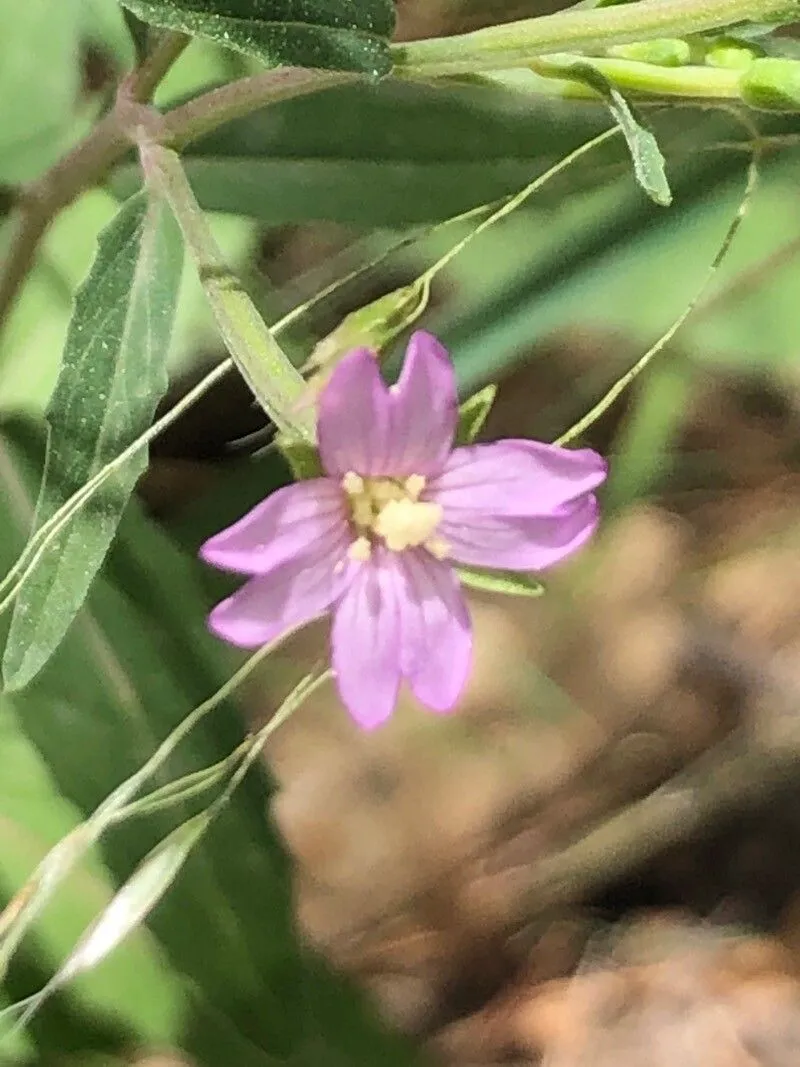
Author: Schreb.
Bibliography: Spic. Fl. Lips.: 147, 155 (1771)
Year: 1771
Status: accepted
Rank: species
Genus: Epilobium
Vegetable: False
Observations: Macaronesia, NW. Africa, Europe to Türkiye
The Dwarf Willowherb, scientifically known as Epilobium obscurum, is a captivating plant species belonging to the Onagraceae family. First documented in 1771 by the botanist Schreb. in his work “Spic. Fl. Lips.,” this plant has carved out its niche across various regions, spanning from the lush landscapes of Macaronesia and Northwestern Africa to the diverse terrains of Europe and Türkiye.
Characterized by its modest stature, the Dwarf Willowherb thrives in a plethora of environments but is predominantly found in moist, temperate regions, where it enjoys the dampness and coolness essential for its growth. This species is notable for its delicate flowers, which typically exhibit soft shades that blend harmoniously with wild meadows and forest fringes, adding a touch of subtle beauty to these natural settings.
The plant’s leaves are another of its attractive features; they are narrow and lanceolate, often showcasing a vibrant green hue that can provide a stark contrast against the more muted tones of its flowers. These leaves are not just aesthetically pleasing but have also adapted well to the diverse climates and soils found within its wide geographical range.
In addition to its visual appeal, Epilobium obscurum plays a role in local ecosystems. It offers nectar and habitat for various pollinators, such as bees and butterflies, thereby supporting the biodiversity of its habitat. Its presence is an indicator of healthy, undisturbed soils and contributes to the ecological balance by participating in nutrient cycling and soil stabilization.
Despite its unassuming name, the Dwarf Willowherb holds significant botanical interest. Researchers and botanists continue to study this plant to understand its ecological interactions, adaptive strategies, and potential uses in horticulture and conservation efforts. Its resilience and adaptability make it a fascinating subject for ecological and environmental studies.
In conclusion, the Dwarf Willowherb, Epilobium obscurum, is more than just a botanical specimen; it is a crucial component of the ecosystems it inhabits, offering both visual delight and ecological benefits. Its widespread distribution from Macaronesia and Northwestern Africa through Europe to Türkiye underscores its adaptability and the vital roles it plays in various natural settings.
Deu: dunkelgrünes weidenröschen
Eng: dwarf willowherb, short-fruited willowherb, obscure willowherb, thin runner willow herb
Nor: mørkmjølke
Dan: ris-dueurt
Nld: donkergroene basterdwederik
Fra: epilobe vert foncé, épilobe foncé, épîlobe vert foncé
Swe: mörk dunört, tummahorsma
Nno: mørkmjølke
Nob: mørkmjølke
Fin: tummahorsma
Lav: tumšzala kazroze
Cym: helyglys byrgodog, helyglys rhedegydd tenau
En: Dwarf willowherb, Short-fruited willowherb, Obscure willowherb, Thin runner willow herb
Cs: Vrbovka tmavá
Da: Ris-dueurt
Nl: Donkergroene basterdwederik
Et: Tume pajulill
Fi: Tummahorsma
Fr: Epilobe vert foncé, Épilobe foncé, Épilobe vert foncé, Épîlobe vert foncé
De: Dunkelgrünes Weidenröschen
It: Garofanino oscuro
Lv: Tumšzala kazroze
No: Mørkmjølke
Nb: Mørkmjølke
Nn: Mørkmjølke
Sv: Mörk dunört, Tummahorsma
Cy: Helyglys byrgodog, Helyglys Rhedegydd Tenau
Taken Jun 17, 2022 by Diego Alex (cc-by-sa)
Taken Jun 17, 2022 by Diego Alex (cc-by-sa)
© copyright of the Board of Trustees of the Royal Botanic Gardens, Kew.
© copyright of the Board of Trustees of the Royal Botanic Gardens, Kew.
© copyright of the Board of Trustees of the Royal Botanic Gardens, Kew.
Growth habit: Forb/herb
Ph maximum: 5.5
Ph minimum: 5.0
Light: 7
Atmospheric humidity: 9
Soil nutriments: 5
Family: Myrtaceae Author: (F.Muell.) K.D.Hill & L.A.S.Johnson Bibliography: Telopea 6: 402 (1995) Year: 1995 Status:…
Family: Rubiaceae Author: Pierre ex A.Froehner Bibliography: Notizbl. Bot. Gart. Berlin-Dahlem 1: 237 (1897) Year:…
Family: Sapindaceae Author: Koidz. Bibliography: J. Coll. Sci. Imp. Univ. Tokyo 32(1): 38 (1911) Year:…
Family: Asteraceae Author: A.Gray Bibliography: Pacif. Railr. Rep.: 107 (1857) Year: 1857 Status: accepted Rank:…
Family: Fabaceae Author: Medik. Bibliography: Vorles. Churpfälz. Phys.-Ökon. Ges. 2: 398 (1787) Year: 1787 Status:…
Family: Aspleniaceae Author: (Cav.) Alston Bibliography: Bull. Misc. Inform. Kew 1932: 309 (1932) Year: 1932…